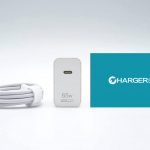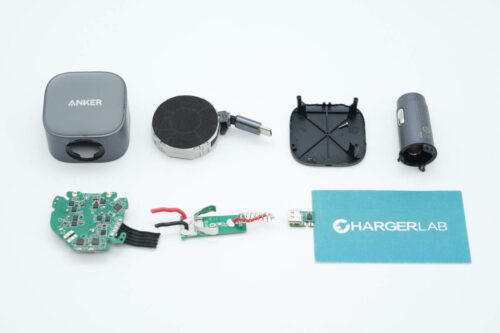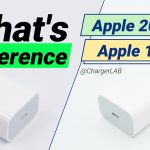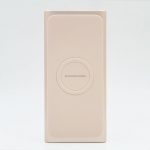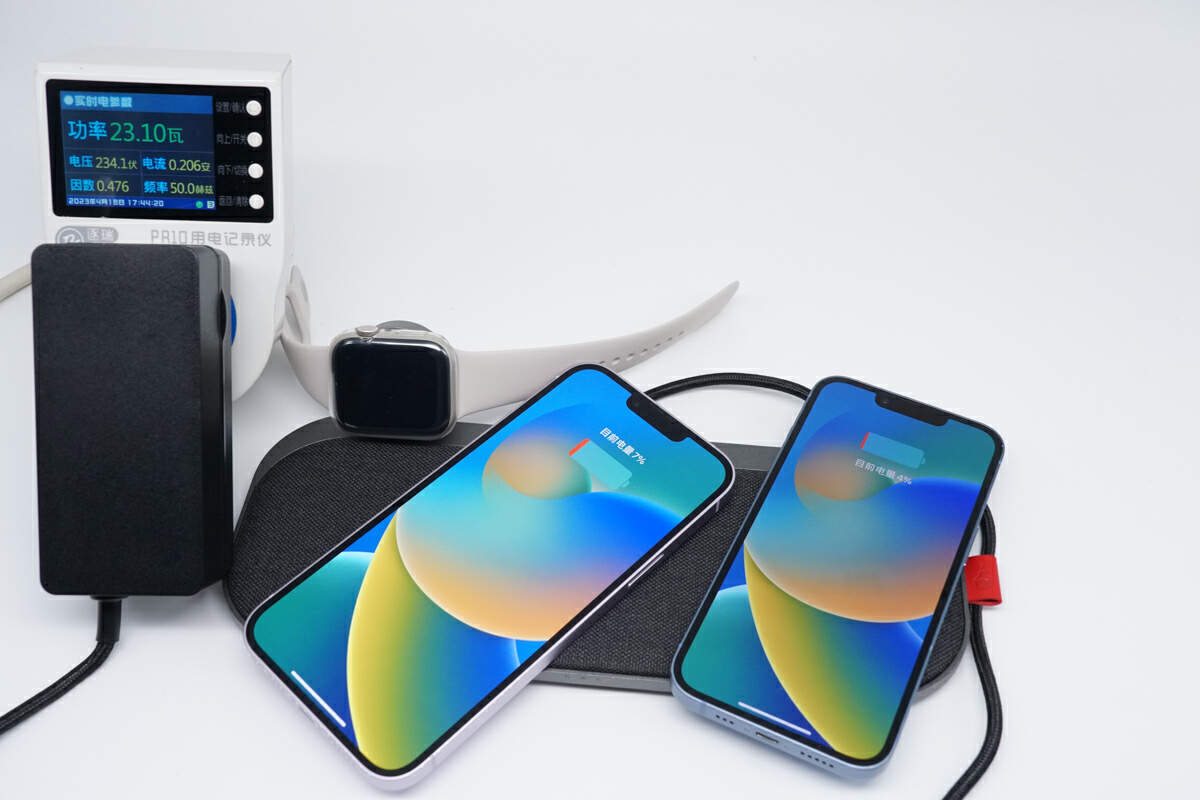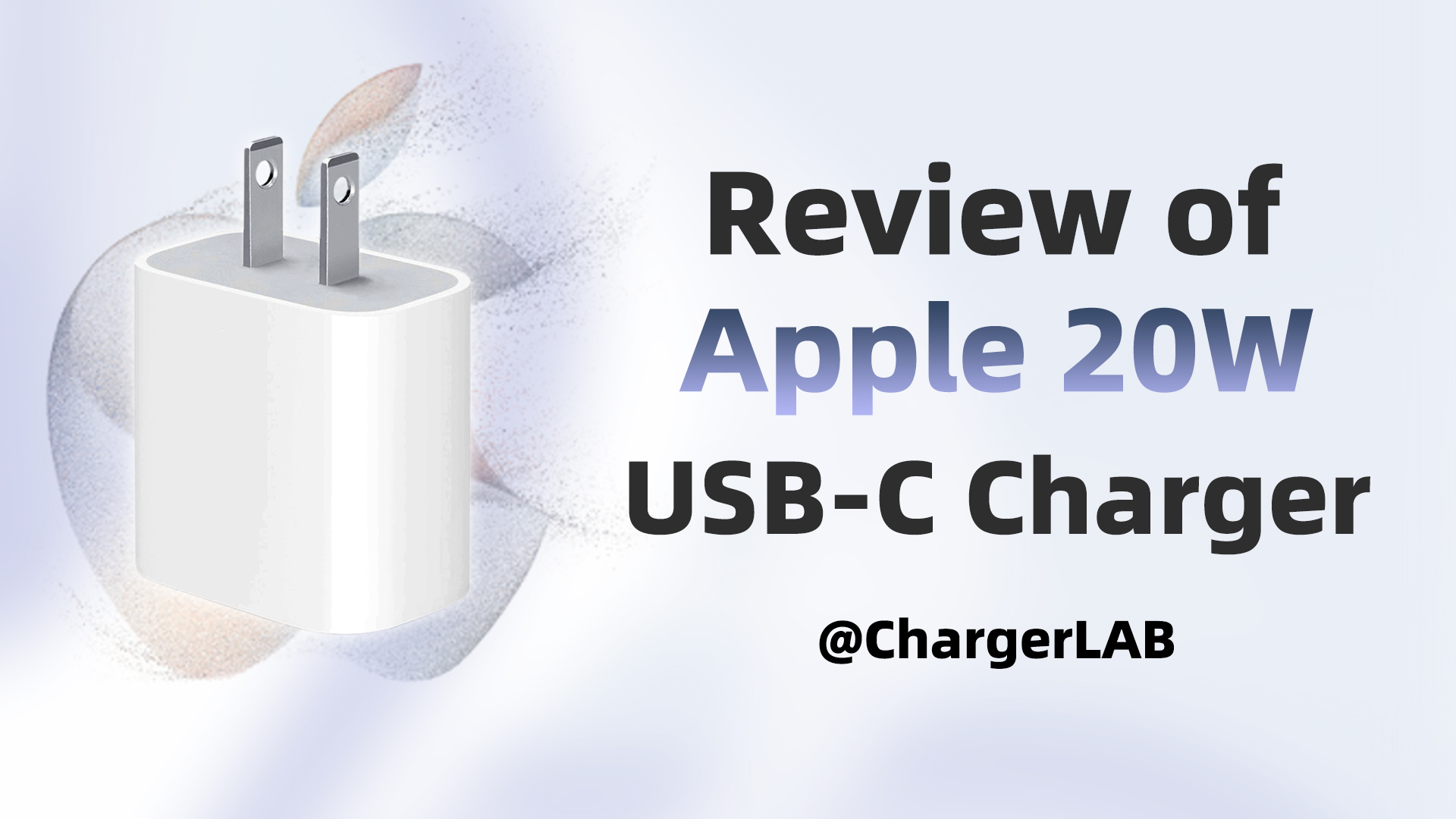Introduction
Huawei has launched a variety of 65W USB-C chargers, supporting its own SuperCharge fast charging protocol, PD fast charging protocols and so on. Recently ChargerLAB got a Huawei 65W USB-C charger, and let's have a review.
The Huawei 65W Charger

The charger comes with a data cable.

The surface is glossy, and the casing consists of two parts: the top and the shell.

This is the white USB-C port.

The specifications are printed on the bottom. The model is HW-200325CP1, which supports up to 65W at the C port.



Its size is about 50.05 x 49.96 x 28.24 mm (1.97 X 1.96 X 1.11 inches), with a volume of about 70.61cm³. The power density is about 0.92W/cm³, which is very conspicuous.

This is the volume comparison between Apple 67W and Huawei 65W.

The weight is about 123.8g (4.36oz).

The included cable adopts the C2C ports.

The end of the cable is printed with 3.3A.

The length of the cable is about 181cm (71.25 inches).
Protocols

The ChargerLAB POWER-Z KT002 finds that it supports QC2.0, QC4, FCP, PD3.0 and PPS protocols.

It supports five fixed PDOs of 5V2A / 9V2A / 12V2A / 15V3A / 20V3.25A and one PPS of 5.5V-21V3.25A.
Review
Compatibility Test
ChargerLAB will use tens of devices for compatibility testing to present readers with the most accurate data.

It is 8.39V 3.18A 26.71W when the charger is charging the Huawei Mate40 Pro.

It is 14.85V 2.04A 30.35W when charging the iPad Pro.

It is 19.74V 3.23A 63.88W when charging the MacBook Pro 16 2021.

The TV mode of Switch supports PD fast charging but requires 15V3A and above, which means the charger should support 45W fast charging at a minimum. Huawei 65W charger has successfully powered the TV mode with 15.02V 0.34A 5.12W.

Here comes the charging compatibility test of Huawei 65W.

ChargerLAB's histogram shows the charging power of each product directly.
Full Charging Test
We used the Huawei 65W to fully charge the Huawei Mate40 Pro.

This is the charging curve of fully charging Huawei Mate40 Pro with Huawei 65W charger. The input was at about 29W in the first 30 minutes and ended at 1 hour with a maximum power of 9.27V 3.21A 29.84W.

The curve shows that Huawei 65W charges 37% in 15 minutes, 76% in 30 minutes, and takes about 1 hour to charge the phone fully.
The Huawei 65W charger is also compatible with PD fast charging, so this time we also use it to fully charge MacBook Pro 13.

This is the charging curve of fully charging MacBook Pro 13 with Huawei 65W charger. It can be roughly divided into four parts. The peak power is 19.73V 2.92A 57.69W. And it takes about 2 hours and 26 minutes to fully charge the MacBook Pro 13.

It can reach 34% in 30 minutes and 66% in 1 hour. It ended at about 2 hours and 25 minutes.
Standby Power Test
Nowadays, most users won't unplug the charger from the outlet after charging. So it's necessary to figure out if there is any power comsumption in this case and how much it is. Let's have a standby power test.

Conversion Efficiency Test
The charger is essentially a conversion device. So energy will be lost in the process of converting. Here comes the conversion efficiency test of Huawei 65W.

The conversion efficiency of the charger varies from 85.9% to 90.28% at 220V 50Hz.

The conversion efficiency varies from 87.06% to 89.64% at 110V 60Hz.
Ripple Test
Most chargers adopt switching power supply currently. And there will be ripples in the output current. The lower ripple means better quality.

The ripple test is divided into no-load (when the current is 0A) and loaded (when the current is non-0A). At 220V 50Hz, when the output is 5V2A, the highest ripple is 78mVp-p. And when the output is 20V0A, the lowest ripple is 24mVp-p.

At 110V 60Hz, when the output is 5V2A, the highest ripple is 66mVp-p. And when the output is 20V0A, the lowest ripple is 12mVp-p.
Temperature Test
As we mentioned, in the process of converting AC to DC, energy will be converted into heat. We'll put it into a 25°C thermotank throughout the test and let it run for an hour with the power of 20V3.25A 65W.

An hour later, the maximum temperature on the two sides was 70.9°C under 220V 50Hz.

And the maximum temperature on the other two sides was 65°C.

An hour later, the maximum temperature on the two sides was 77.9°C under 110V 60Hz.

And the maximum temperature on the other two sides was 73.4°C.
Full-load Stability Test

Running for one hour with 20V3.25A and 65W, the charger's voltage and current had no obvious fluctuations, which is quite stable for long-time full-load use.
Summary of ChargerLAB
The Huawei 65W charger with the usual white glossy shell has a fixed prong for stability. Its volume is quite remarkable, with a power density of 0.92W/cm³ being the best in Huawei's chargers.
It supports QC2.0, QC4, FCP, PD3.0 and PPS protocols, with five fixed PDOs of 5V2A / 9V2A / 12V2A / 15V3A / 20V3.25A and one PPS of 5.5V-21V3.25A.
The compatibility performance is relatively mediocre, for it can't charge some phones, while the performance of charging the laptops is better.
Related Articles:
1. Teardown of Huawei 90W GaN Charger (For MateBook 14s)
2. Review of UGREEN Nexode 3-in-1 65W GaN Charger
3. Charging Compatibility Test of Lenovo thinkplus GaN Nano 65W Charger (The Third Generation)

